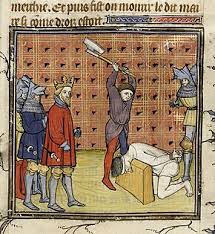Stamp: School Correspondence. Don Quixote (Spain 1998)
School Correspondence. Don Quixote (Spain 1998)
25 September (Spain ) within release Don Quichotte goes into circulation Stamp School Correspondence. Don Quixote face value 20 Spanish peseta
| Stamp School Correspondence. Don Quixote in catalogues | |
|---|---|
| Michel: | Mi:ES 3401 |
Stamp is horizontal format.
Also in the issue Don Quichotte:
- Stamp - School Correspondence. Don Quixote face value 20;
- Stamp - School Correspondence. Don Quixote face value 20;
- Stamp - School Correspondence. Don Quixote face value 20;
- Stamp - School Correspondence. Don Quixote face value 20;
- Stamp - School Correspondence. Don Quixote face value 20;
- Stamp - School Correspondence. Don Quixote face value 20;
- Stamp - School Correspondence. Don Quixote face value 20;
- Stamp - School Correspondence. Don Quixote face value 20;
- Stamp - School Correspondence. Don Quixote face value 20;
- Stamp - School Correspondence. Don Quixote face value 20;
- Stamp - School Correspondence. Don Quixote face value 20;
- Stamp - School Correspondence. Don Quixote face value 20;
- Stamp - School Correspondence. Don Quixote face value 20;
- Stamp - School Correspondence. Don Quixote face value 20;
- Stamp - School Correspondence. Don Quixote face value 20;
- Stamp - School Correspondence. Don Quixote face value 20;
- Stamp - School Correspondence. Don Quixote face value 20;
- Stamp - School Correspondence. Don Quixote face value 20;
- Stamp - School Correspondence. Don Quixote face value 20;
- Stamp - School Correspondence. Don Quixote face value 20;
- Stamp - School Correspondence. Don Quixote face value 20;
- Stamp - School Correspondence. Don Quixote face value 20;
- Stamp - School Correspondence. Don Quixote face value 20;
- Stamp - School Correspondence. Don Quixote face value 20;
Stamp School Correspondence. Don Quixote it reflects the thematic directions:
Famous People refers to the fame and public attention accorded by the mass media to individuals or groups or, occasionally, animals, but is usually applied to the persons or groups of people (celebrity couples, families, etc.) themselves who receive such a status of fame and attention. Celebrity status is often associated with wealth (commonly referred to as fame and fortune), while fame often provides opportunities to make money.
Mammals are any vertebrates within the class Mammalia (/məˈmeɪli.ə/ from Latin mamma "breast"), a clade of endothermic amniotes distinguished from reptiles (including birds) by the possession of a neocortex (a region of the brain), hair, three middle ear bones and mammary glands. All female mammals nurse their young with milk, secreted from the mammary glands. Mammals include the largest animals on the planet, the great whales. The basic body type is a terrestrial quadruped, but some mammals are adapted for life at sea, in the air, in trees, underground or on two legs. The largest group of mammals, the placentals, have a placenta, which enables the feeding of the fetus during gestation. Mammals range in size from the 30–40 mm (1.2–1.6 in) bumblebee bat to the 30-meter (98 ft) blue whale. With the exception of the five species of monotreme (egg-laying mammals), all modern mammals give birth to live young. Most mammals, including the six most species-rich orders, belong to the placental group. The largest orders are the rodents, bats and Soricomorpha (shrews and allies). The next three biggest orders, depending on the biological classification scheme used, are the Primates (apes and monkeys), the Cetartiodactyla (whales and even-toed ungulates), and the Carnivora (cats, dogs, seals, and allies).
The horse (Equus ferus caballus) is one of two extant subspecies of Equus ferus. It is an odd-toed ungulate mammal belonging to the taxonomic family Equidae. The horse has evolved over the past 45 to 55 million years from a small multi-toed creature, Eohippus, into the large, single-toed animal of today. Humans began to domesticate horses around 4000 BC, and their domestication is believed to have been widespread by 3000 BC. Horses in the subspecies caballus are domesticated, although some domesticated populations live in the wild as feral horses. These feral populations are not true wild horses, as this term is used to describe horses that have never been domesticated, such as the endangered Przewalski's horse, a separate subspecies, and the only remaining true wild horse. There is an extensive, specialized vocabulary used to describe equine-related concepts, covering everything from anatomy to life stages, size, colors, markings, breeds, locomotion, and behavior.
A book is a medium for recording information in the form of writing or images. Books are typically composed of many pages, bound together and protected by a cover. Modern bound books were preceded by many other written mediums, such as the codex and the scroll. The book publishing process is the series of steps involved in their creation and dissemination.
In the history of Europe, the Middle Ages or medieval period (also spelt mediaeval or mediæval) lasted approximately from 500 AD to 1500, although some prefer other start and end dates. The Middle Ages is the second of the three traditional divisions of Western history: antiquity, medieval, and modern. Major developments include the predominance of agriculture in the economy, the exploitation of the peasantry, slow interregional communication, the importance of personal relationships in power structures, and the weakness of state administration. The period is sometimes subdivided into the Early, High, and Late Middle Ages, and the early medieval period is alternatively referred to as the Dark Ages.
Animals are multicellular, eukaryotic organisms of the kingdom Animalia (also called Metazoa). All animals are motile, meaning they can move spontaneously and independently, at some point in their lives. Their body plan eventually becomes fixed as they develop, although some undergo a process of metamorphosis later on in their lives. All animals are heterotrophs: they must ingest other organisms or their products for sustenance.






